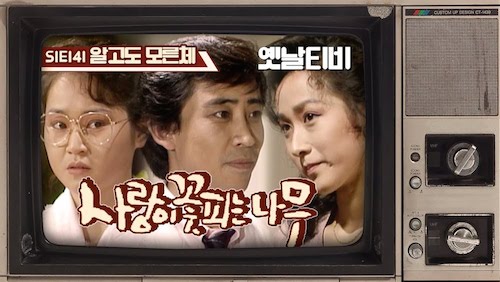
I belong to the rapidly shrinking group of pop-culture laggards who haven’t seen Netflix’s hit new Korean drama Squid Game (오징어 게임). That’s counting people not just in Korea but all across the world. My latest glimpse of someone engrossed in the series’ (so I gather) trenchant social commentary and startling violence came on a domestic flight in the United States, since I happen to be in the middle of my first post-COVID travels. While abroad I’ve kept an ear to Korean news, eaten Korean meals of varying quality, and even watched Korean dramas. Those last, however, long precede Squid Game, Netflix, and even the internet as we know it — yet before the era of streaming video, I couldn’t have seen them at all. I refer, of course, to the Korean television dramas of the 1980s now free to watch on YouTube.
These channels are maintained not by enthusiasts (though such unofficial operations do exist), but by the networks themselves. None go deeper than KBS Archive, property as it is of the Korean Broadcasting System, the first major player in South Korea’s television industry. KBS got into single-act productions after purchasing fledgling TV station HLKZ fifty years ago; later in the 1960s came serial dramas, antecedents of the shows that have bolstered Korean soft power across the world for decades now. I’ve long wanted to watch these early examples of what trend pieces these days call K-drama, but it seems KBS’ archivists haven’t yet worked their way quite that deep into the vaults. But they have, thus far, uploaded individual broadcasts dating back to the late 1970s, and on KBS Archive’s drama playlist have assembled several complete or mostly complete series of thirty or forty years ago.
On KBS Archive you can stream the likes of The Tree Blooming with Love (사랑이꽃피는나무), Fetters of Love (사랑의굴레), Moonlight Family (달빛가족), and When the Flowers Bloom and the Birds Cry (꽃피고새울면). These English translations of their titles do not, I would argue, wholly misrepresent the sensibilities on display. With their reliance on prolonged conflicts in the realms of romance, family, school, and work, these are entertainments of what could fairly be called simpler times, at least in the set of emotions conveyed and the techniques used to convey them. One frequently deployed technique is a zoom in onto a character’s shocked or pained expression accompanied by a music sting — almost invariably produced, in the 1980s, with now incongruously cheap-sounding digital synthesizers.
Read the whole thing at the Los Angeles Review of Books.